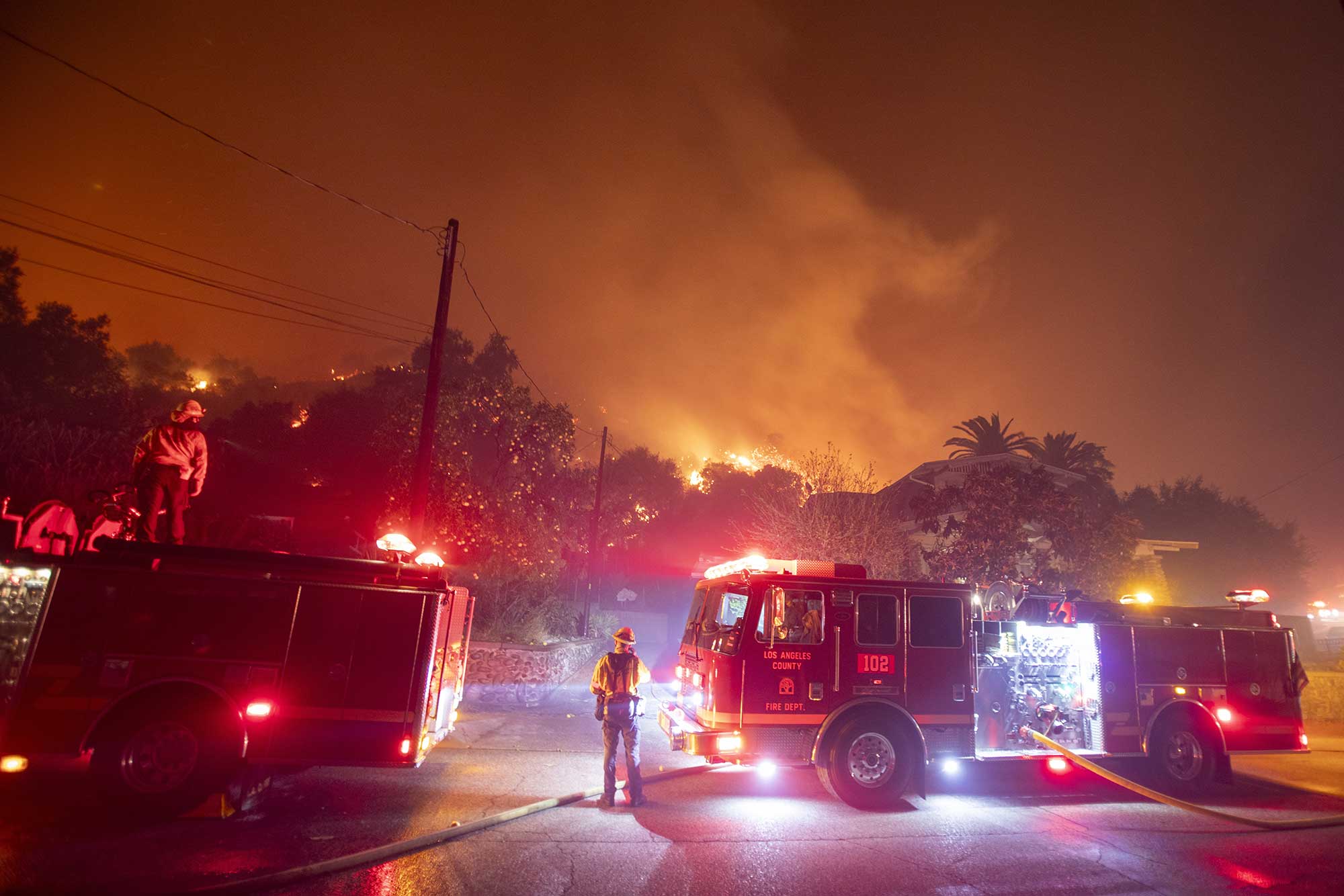As of this writing five active fires have burned some 30,000 acres across Los Angeles County and firefighters have yet to contain the blazes. More than 2,000 buildings have been destroyed and at least five people are dead.
California does have a regular wildfire season, but January isn’t it. That got me thinking about the way we, as climate-active individuals, talk about events like this. The majority of what we cover at one5c centers on physical acts: tweaks to the way we eat, shop, and move about the world. But talking about human-caused climate change is actually one of the most important things you can do.
So here’s a simple action you can do today and every day: Don’t call every extreme event a natural disaster. Just call them disasters. Nature gets no blame for what’s happening in L.A. right now.
Why is this important? Because the way we describe what’s happening in our world has power. It’s why it matters that we say “climate crisis” or add “human-caused” to “climate change.” In the case of disasters, the word “natural” obscures human agency in the hundreds of events that unfold worldwide every year.
“In the case of disasters, the word ‘natural’ obscures human agency in the hundreds of events that unfold worldwide every year.”
This isn’t just pedantic nitpicking, because it’s got everything to do with the term “disaster” itself. We tend to conflate hazards—sources of potential danger like floodplains, fault lines, and volcanoes—with disasters. Disasters are what happen when society collides with hazards. They’re the result of unnatural human choices like where we build cities and, yes, how we do (or don’t) continue loading up the atmosphere with planet-warming gases. Disasters aren’t natural.
I won’t pretend this is a new idea. The phrase “there’s no such thing as a natural disaster” is the title of an academic essay published after the flubbed response to Hurricane Katrina in 2005. But the assertion that the term is an oxymoron is extra potent because its rise coincides with the development of attribution science, which is how researchers connect the dots between events and human-caused climate change. An analysis updated last fall found that 83% of wildfires, droughts, heat waves, and other extreme events were spurred or made worse by greenhouse gases cooking the atmosphere.
The L.A. fires, in particular, are the result of a confluence of factors. It’s supposed to be the rainy season in Southern California right now, but the L.A. area hasn’t had much more than a drizzle in months. And before this dry spell there were record rains. These climate-fueled swings, or “weather whiplash,” create a prime environment for wildfire as vegetation and brush thrive when it’s wet and then are likely to burn when it’s parched. The area’s seasonal Santa Ana winds, meanwhile, are speeding the spread.
The winds, they’re natural—and by some definitions a hazard. The fires are a disaster, and that’s what we should call them, plain and simple.
Of course there’s more we can to to help those impacted by the fires, and I’ve listed some resources below, but I’ll leave you with this for now: Remember, we’re not powerless against the climate crisis and we can all be part of the solution in ways both big and small—like striking the word “natural” from our disaster vocabulary.
Where you can send donations
- The Red Cross and Airbnb.org are set up to provide shelter
- Direct Relief gets medical supplies and meds into disaster zones
- World Central Kitchen is set up to deliver food and water
- The L.A. YMCA is offering childcare for first responders and displaced families
- Best Friends Animal Society is working to care for and evacuate pets

